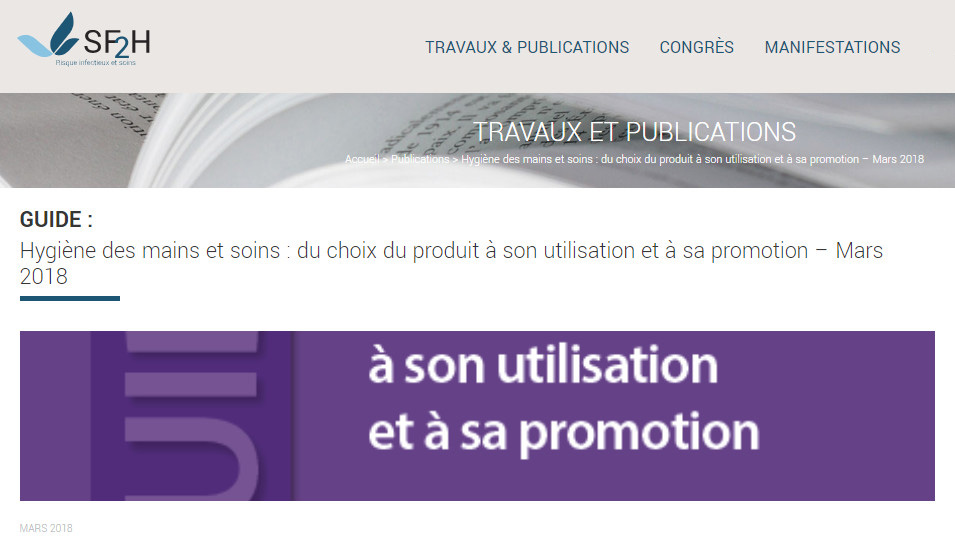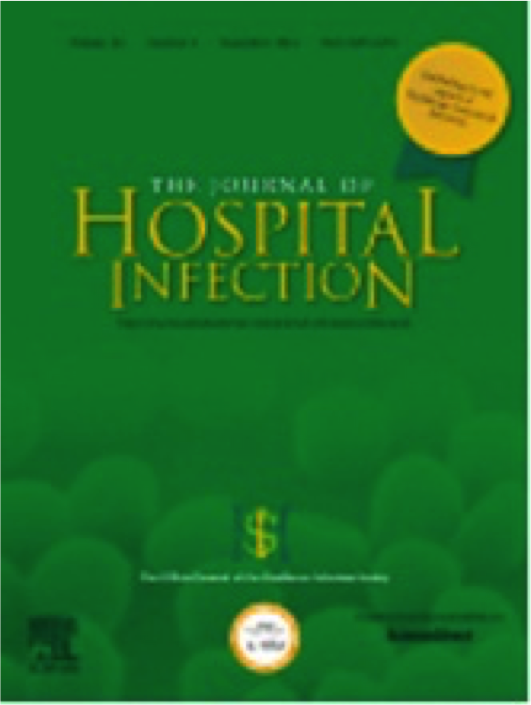New guidance on hand hygiene published by the French Society for Hospital Hygiene, SF2H, strongly discourages the use of electric hand dryers as a method of hand drying in hospital washrooms, and recommends instead the use of single use paper towels as the most effective way to dry hands and minimise the spread of infection following a visit to the washroom.
 Issued by France’s leading healthcare society, SF2H’s newly published guidance – Hand hygiene and care – choice of products and how to use and promote them – offers the first new guidance on hand hygiene for many years. It recognises that good hand hygiene among healthcare professionals is essential in preventing infection and cross-transmission of micro-organisms in a healthcare setting.
Issued by France’s leading healthcare society, SF2H’s newly published guidance – Hand hygiene and care – choice of products and how to use and promote them – offers the first new guidance on hand hygiene for many years. It recognises that good hand hygiene among healthcare professionals is essential in preventing infection and cross-transmission of micro-organisms in a healthcare setting.
The report was reviewed by 25 experts in infection control and microbiology, and will be widely circulated and read by those working to promote optimal hygiene and minimize the spread of microorganisms.
On the subject of hand drying, the report cites the most recent literature reviewed by SF2H, including a number of studies undertaken by Professor Mark Wilcox MD, consultant microbiologist, Leeds Teaching Hospitals and University of Leeds, UK, and Keith Redway of the University of Westminster.
These studies found that electric dryers contaminate both the air and the surfaces in washrooms with bacteria and viruses. (see 1-4 below)
 Commenting on the new guidance, Prof. Frédéric Barbut of UHLIN, Groupe Hospitalier de l’Est Parisien, said “This new SF2H guidance reflects the latest research on hand hygiene and is intended to complement the recommendations published in 2009. Responding to a question frequently posed by hygienists, and in light of recently published studies, the authors of the Guidance advise against the use of hot air hand dryers in healthcare settings because of bacterial and viral contamination of air and surfaces.”
Commenting on the new guidance, Prof. Frédéric Barbut of UHLIN, Groupe Hospitalier de l’Est Parisien, said “This new SF2H guidance reflects the latest research on hand hygiene and is intended to complement the recommendations published in 2009. Responding to a question frequently posed by hygienists, and in light of recently published studies, the authors of the Guidance advise against the use of hot air hand dryers in healthcare settings because of bacterial and viral contamination of air and surfaces.”
SF2H, the French Society for Hospital Hygiene, is a member of the European network to promote infection prevention for patient safety and of the International Federation of Infection Control (IFIC). It is composed of professionals working in the field of hygiene promotion in healthcare and promotes safety and quality of care, epidemiology, prevention and the fight against healthcare associated infections. SF2H also undertakes safety and health awareness evaluation, accreditation and risk management in the field of healthcare associated infections.
“The latest SF2H guidance provides clear guidance to healthcare professionals throughout France and beyond,” says Fanis Papakostas, chairman of ETS. “We are very pleased that the research into optimal hand drying methods undertaken by the universities of Leeds and Westminster in recent years has been helpful in supporting this guidance. The results of these studies have significant implications for the choice of hand-drying method in hospital washrooms, where limiting the spread of microorganisms is paramount due to patients increased susceptibility to infection and the greater prevalence of potential and/or antimicrobial-resistant pathogens”
1. Microbiological comparison of hand drying methods: the potential for contamination of the environment, user and bystander. E.L. Best,1 P. Parnell,1 M.H. Wilcox 1,2 – Microbiology Department, Old Medical School, Leeds General Infirmary, Leeds Teaching Hospitals NHS Trust1 & University of Leeds,2 Leeds LS1 3EX, UK. Journal Hospital Infection 2014; 88:199-206. See also the page: Microbiological comparison of hand drying methods …
2. “Comparison of different hand-drying methods: the potential for airborne microbe dispersal and contamination” and is authored by Keith Redway (Department of Biomedical Sciences, Faculty of Science and Technology, University of Westminster, London, UK) and by E.L. Best (Microbiology Department, Old Medical School, Leeds General Infirmary, Leeds Teaching Hospitals NHS Trust, Leeds UK). Journal Hospital Infection 2015;89:215-217. See also the page: Comparison of different Hand drying methods
3. Evaluation of the potential for virus dispersal during hand drying: a comparison of three methods P.T. Kimmitt and K.F. Redway. Department of Biomedical Sciences, Faculty of Science and Technology, University of Westminster, London, UK. Journal of Applied Microbiology 120, 478–486 © 2015 The Society for Applied Microbiology. See also the page: Hand drying with single-use towels reduces the risk of the transmission of viruses
4. Pilot Study to determine whether microbial contamination levels in hospital washrooms are associated with hand-drying method
M.H. Wilcox Correspondence information about the author M.H. Wilcox, E.L. Best P. Parnell Microbiology, Leeds Teaching Hospitals NHS Trust & University of Leeds, Leeds, UK Journal of Hospital infection 2017; 97 200-2003. See also the page: Pilot Study
This page is also available in: French German Italian Polish Spanish
















